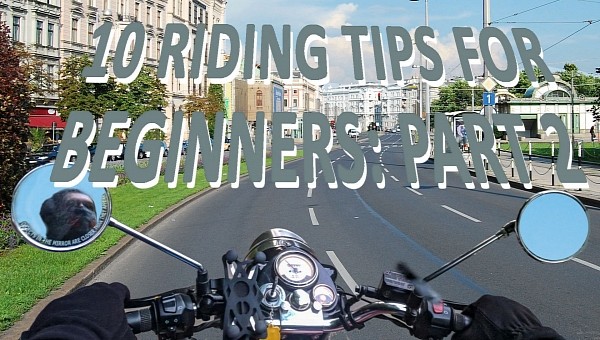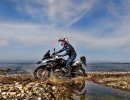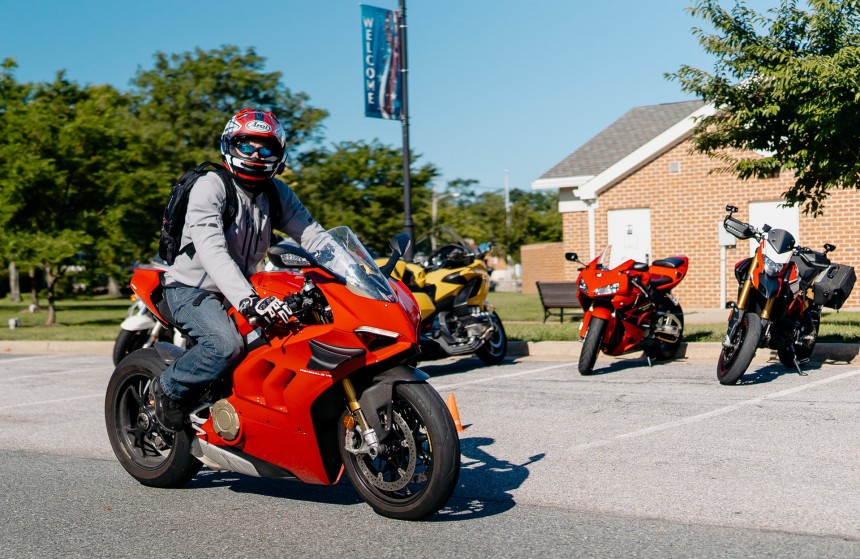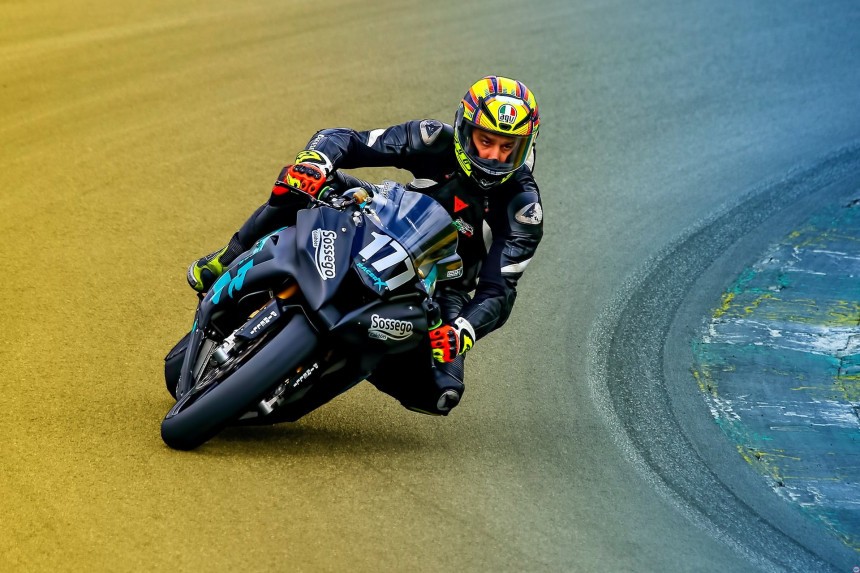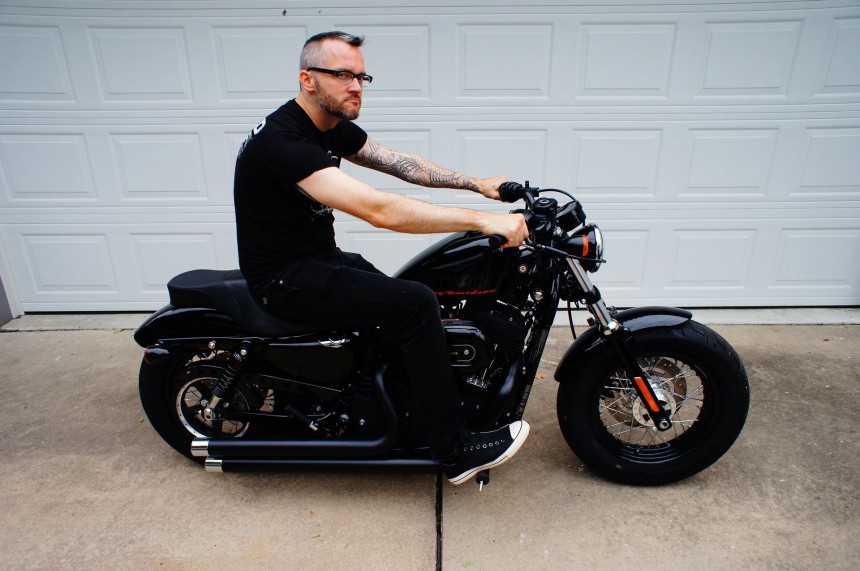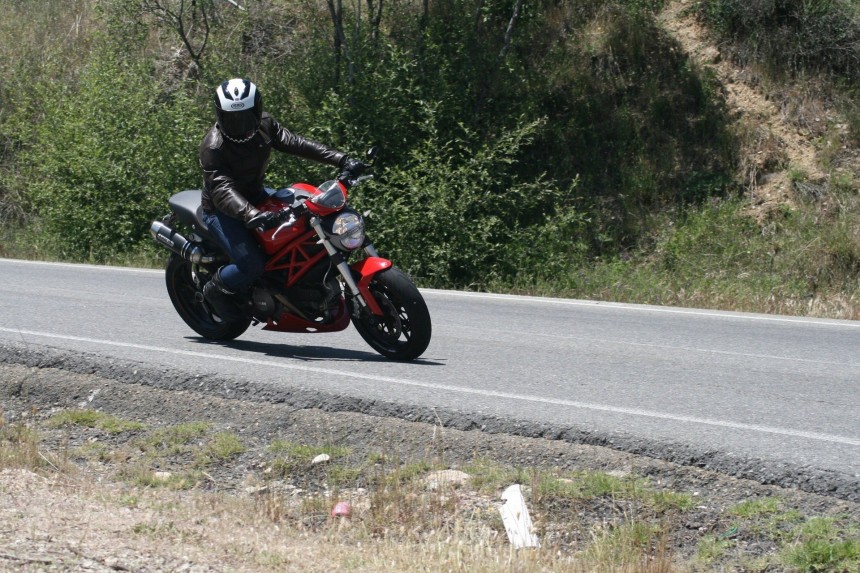Hi there, young fellow riders, and thanks for checking back with us for the second part of the “Riding Tips for Beginners” guide. The first part underlined the importance of wearing protective gear and refraining yourselves from riding way beyond your skills just to keep up with the rest of the gang.
This second part of the guide will deal with some more things, which can make your first rides easier and by all means safer, allowing you to gain more experience and build up confidence.
There are many reasons why riding stiff and tense is a bad idea. If you grasp the handlebars firmly and squeeze the bike tight, you won't ride better. Quite the opposite, actually. This type of riding will cause premature fatigue, and this leads to poor steering. Some maneuvers require gentle actions on the throttle, clutch, and brake levers. If you're too tight on the handlebars, you won't be able to do that. Instead, you will pull the clutch or front brakes too hard. While the former might not be such an issue, the latter might end badly.
Moreover, while cornering, you have to get a perfect balance between your body and the bike's lean. If your body is stiff, that's not gonna happen, so you'll struggle more to get that result. Meanwhile, if you're more relaxed and flexible, it will be easier for you to quickly adapt.
What you have to do is to grip the bike with your knees and thighs strong enough to keep you safe, but not that strong to make you tired after five minutes of riding. To safely learn how tight it enough, you may try this while sitting on your bike in your garage. Keep the bike on the stand, jump on it, and lean in all directions with your hands in the air. Don't touch the handlebars, though. Thus, you'll notice that you don't need to squeeze the tank or rub the bike's cylinders. That's one way to find the optimal grip.
If we're talking about the “loose on top” thing, you need to understand that “loose” doesn't mean out of control. It's not too wry either. Keeping your hands more relaxed on the handlebars will help you control the bike while riding over a bump. If you're too stiff, the shock will be sent through your body to the entire bike. Moreover, you might even alter the direction because of that, and that's definitely not a good thing.
Especially when it comes to turns, you should remember that your body is not a concrete structure and can bend and act in countless ways, complementing the behavior of the bike according to speed, riding surface, and type of motorcycle.
Sometimes, people who have a call for bikes are doing all of these instinctively. But I never met a biker who knew all of these right from the start. They knew a few things, but discovered most of them by themselves in time. That's why they shared their experience with younger riders; but only with those who didn't pretend that they knew everything. Experienced bikers know how to understand various vibrations felt while riding. Most of those vibrations are felt via the nerve endings from their buttocks.
But there are many types of motorcycles out there. Some are made for long and relaxed cruises. Some are built for off-road or speed. It's obvious that you can't have the same posture on all these types of bikes. Furthermore, maybe you heard that “you don't choose the bike, the bike chooses you.” Well, that's partially true. So, if you're way overweight, then you shouldn't ride an off-road bike. You should stick to cruisers as you'll fit well on those.
Also, a sport bike requires bikers to lean forward, in a posture like they are hugging the fuel tank. That's nice, but if your belly is in the way, then you have a problem. On the other hand, a cruise bike is heavy, so if your best performance is one push-up, then you should stick to lighter motorcycles. Last but certainly not least, since we have more riding tips episodes, if you can't lift a bike, don't take it. It's not for you. At least not yet.
For short, the riding stance is about keeping your motorcycle in control with your hands and holding on to it with the lower part of your body. Your upper side needs to lean and adapt constantly. Too firm and you'll get tired, too loose and you won't control the bike. Learn the difference without using your arms at all, on a stand, in your garage, or in a parking lot.
Tip: before buying a bike, first sit on it and see which is the appropriate position on it. If you feel comfortable, then you can ride it. If you don't try something else.
However, being new to the two-wheeled world does not mean you have to give the road a couple of feet in front of you a death stare. In fact, looking at a fixed point in front of the bike is one of the worst things to do.
Generally, every experienced biker will tell you that the motorcycle goes where you look. After some thousands of miles, you'll start figuring this out for yourselves. Looking ahead broadens your field of view and allows you to spot potential dangers, whether cars driven recklessly, bumps and holes in the ground, patches of road covered by oil or gravel, and whatnot.
Looking ahead builds confidence and trains instincts, even though it may seem scary for some of you during the first hundred miles. In addition, looking in front of you allows your body to get used to various riding stances, and learn how to lean, shift gears, and brake with as little brain intervention as possible: THAT means instincts and well-trained reactions can make a huge difference.
Spotting a potential danger ahead will trigger defensive actions such as slowing down, preparing to swerve, or even pulling over if necessary, and will usually grant you more time to make a decision. You'll learn that, when you're on a bike, time is an extremely pricey resource, decreasing with speed: the faster you'll be riding, the less time you have to make decisions and act. So why not get as much time as possible for all this?
Mirrors are there for a reason, and making your bike look good is not it. Checking with your mirrors twice a minute or even more often (if you're riding in heavy traffic) is one of the key elements of safely riding a bike.
When in the city or on roads with multiple lanes, checking your six is mandatory, even if you don't plan to turn either right or left. It's just better to know a bit of what's happening behind you: more than once, this saved guys from being rear-ended badly.
Now, checking the mirrors is really not a big deal at all. You don't need to turn your head too much or anything like that: a simple, quick glance is enough, provided you've adjusted the mirrors properly. By the way, you should really see the road behind you and much of the adjacent lanes in the mirrors and only a part of your shoulders.
Some guys prefer to turn the mirrors way to the outside, so they get a perfect view of the lanes on the right and left with a little-to-none view of the back, but that's up to personal preferences. In the end, it doesn't matter how much of your shoulder you see in the mirror: it's how well you see what's behind you.
Keywords: eyes on the road. Until you've gotten used to riding without too much fear, it's best you look at the road ahead and behind (mirrors). You may be riding in a beautiful scenery. Still, if you feel like sightseeing, it's better to pull over than be distracted by the misty mountains red with sunset.
Tip: get used to knowing where you are on the road and what's happening around you, back and front. Knowing your position in traffic allows you to react faster in emergency situations and provides a more relaxed ride.
Make sure you read the next episode of the Autoevolution "Riding Tips for Beginners" guide.
3. Riding stance
Riding on a bike might look glamorous from the outside, but your first day on two wheels will end in pain. No, not from falls, hopefully, but from muscles. Your posture won't be right and that's completely understandable. You're gonna be tense and, at the end of the day, instead of a cool, refreshing beer, you'll get some painkillers. So, let's put an end to those problems sooner with a little bit of knowledge.There are many reasons why riding stiff and tense is a bad idea. If you grasp the handlebars firmly and squeeze the bike tight, you won't ride better. Quite the opposite, actually. This type of riding will cause premature fatigue, and this leads to poor steering. Some maneuvers require gentle actions on the throttle, clutch, and brake levers. If you're too tight on the handlebars, you won't be able to do that. Instead, you will pull the clutch or front brakes too hard. While the former might not be such an issue, the latter might end badly.
Moreover, while cornering, you have to get a perfect balance between your body and the bike's lean. If your body is stiff, that's not gonna happen, so you'll struggle more to get that result. Meanwhile, if you're more relaxed and flexible, it will be easier for you to quickly adapt.
Tight your legs, not your top
Apart from gravity, there are other parts of your body that will keep you on the bike, but those are not your hands. Your knees, your ankles, and your tights will do that. But then again, don't do that too tight. You don't tame a bike with your legs, but with your hands and your body. They are also responsible for steering, signaling, braking, and accelerating. Keeping you tight is not their job.If we're talking about the “loose on top” thing, you need to understand that “loose” doesn't mean out of control. It's not too wry either. Keeping your hands more relaxed on the handlebars will help you control the bike while riding over a bump. If you're too stiff, the shock will be sent through your body to the entire bike. Moreover, you might even alter the direction because of that, and that's definitely not a good thing.
Especially when it comes to turns, you should remember that your body is not a concrete structure and can bend and act in countless ways, complementing the behavior of the bike according to speed, riding surface, and type of motorcycle.
Heels are important
First of all, never ride with your heels out. They should be as close as possible to the bile. Thus, you'll get a better grip and you'll steer easier. Some bikes have a small metal part on the rider's footrest. The inner side of your heels must be placed in that area.But there are many types of motorcycles out there. Some are made for long and relaxed cruises. Some are built for off-road or speed. It's obvious that you can't have the same posture on all these types of bikes. Furthermore, maybe you heard that “you don't choose the bike, the bike chooses you.” Well, that's partially true. So, if you're way overweight, then you shouldn't ride an off-road bike. You should stick to cruisers as you'll fit well on those.
Also, a sport bike requires bikers to lean forward, in a posture like they are hugging the fuel tank. That's nice, but if your belly is in the way, then you have a problem. On the other hand, a cruise bike is heavy, so if your best performance is one push-up, then you should stick to lighter motorcycles. Last but certainly not least, since we have more riding tips episodes, if you can't lift a bike, don't take it. It's not for you. At least not yet.
For short, the riding stance is about keeping your motorcycle in control with your hands and holding on to it with the lower part of your body. Your upper side needs to lean and adapt constantly. Too firm and you'll get tired, too loose and you won't control the bike. Learn the difference without using your arms at all, on a stand, in your garage, or in a parking lot.
4. Look ahead, look in the mirrors, look ahead, and so on
It's true that beginner riders are sometimes a bit afraid of actually hitting the road, and a bit of fear is both normal and safe. Normal because it's them and the great unknown. And safe because too much confidence decreases awareness and can lead to nasty things.However, being new to the two-wheeled world does not mean you have to give the road a couple of feet in front of you a death stare. In fact, looking at a fixed point in front of the bike is one of the worst things to do.
Generally, every experienced biker will tell you that the motorcycle goes where you look. After some thousands of miles, you'll start figuring this out for yourselves. Looking ahead broadens your field of view and allows you to spot potential dangers, whether cars driven recklessly, bumps and holes in the ground, patches of road covered by oil or gravel, and whatnot.
Looking ahead builds confidence and trains instincts, even though it may seem scary for some of you during the first hundred miles. In addition, looking in front of you allows your body to get used to various riding stances, and learn how to lean, shift gears, and brake with as little brain intervention as possible: THAT means instincts and well-trained reactions can make a huge difference.
Look far and look back
Don't ever be afraid to look as far on the road as possible from time to time. Getting yourself used to looking far ahead in turns is also very useful: it will help you detect obstacles and varying turn angles and will also make your riding more stable and confident. As you look ahead, the road seems to be wider. And wide roads are less scary than narrow ones, aren't they?Mirrors are there for a reason, and making your bike look good is not it. Checking with your mirrors twice a minute or even more often (if you're riding in heavy traffic) is one of the key elements of safely riding a bike.
When in the city or on roads with multiple lanes, checking your six is mandatory, even if you don't plan to turn either right or left. It's just better to know a bit of what's happening behind you: more than once, this saved guys from being rear-ended badly.
Some guys prefer to turn the mirrors way to the outside, so they get a perfect view of the lanes on the right and left with a little-to-none view of the back, but that's up to personal preferences. In the end, it doesn't matter how much of your shoulder you see in the mirror: it's how well you see what's behind you.
Keywords: eyes on the road. Until you've gotten used to riding without too much fear, it's best you look at the road ahead and behind (mirrors). You may be riding in a beautiful scenery. Still, if you feel like sightseeing, it's better to pull over than be distracted by the misty mountains red with sunset.
Tip: get used to knowing where you are on the road and what's happening around you, back and front. Knowing your position in traffic allows you to react faster in emergency situations and provides a more relaxed ride.
Make sure you read the next episode of the Autoevolution "Riding Tips for Beginners" guide.
